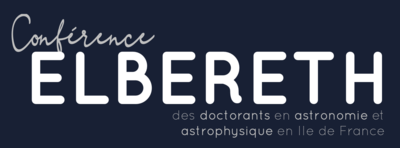Orateur
Description
The James Webb Space Telescope (JWST) has discovered a very surprising type of galaxy, a large population of compact red objects known as Little Red Dots (LRDs). To this day, this population remains misunderstood because of two opposing explanations: either they can be compact dusty star forming galaxies or Active Galactic Nucleus (AGNs). In both cases, the physics involved is very extreme, reaching the limit of our understanding of structure formation and super massive black holes seeds. This population also raises another puzzling question: where are they at low redshift? Indeed, they are typically observed at high redshift with 4<z<9. This last question is one of my goals as a first-year PhD student.
In this talk, I intend to present the work I have carried out to date: Using JWST NIRCam data in the CEERS field of view, I built a sample of 100 candidate galaxies that would succeed these LRDs. To see if this sample is a good candidate for evolved LRDs, I compare masses, compactness, number density and the usual selection criteria applied to select LRDs. The results are very promising: this sample is very similar to LRDs but at a lower redshift, with common characteristics such as mass (~10^10 M⊙), the central mass density (~10^11 M⊙.kpc^-2) and colors. One of the main differences is that this sample has benefited from a physical extension (Re~1 kpc) compared to the unresolved LRDs (Re < 0.5kpc). Moreover, this periphery seems to grow with z, which could be a sign of evolution over time. Finally, a correlation between the growth of this periphery and the presence of the V-shape is observed. All these clues could help explain the true nature of LRDs and answer the question of where are they at lower redshift.
| Astrophysics Field | Galaxy formation & evolution |
|---|

